- ALL SERVICES
- • Salesforce Consulting Services
- • Managed Services
- • Simplification of Interfaces
- • Data Migration and Processing
- • Architectural Solutions and Scoping
- • Code Review, QA and Support
- • Applications Development
- • Pre-sales and Solutions Consulting
- • Technical Audit and Support
- • Custom Applications Development
- • AI Apps
BLOG
From Salesforce CDP to Salesforce Data Cloud: How Salesforce Powers Personalization?
• Date: August 2024 •
Estimated reading time: 14 minutes
Estimated reading time: 14 minutes
Subscribe for more useful content
We promise we'll not spam your mailbox!
By submitting you agree to receive a newsletter from Twistellar. You can unsubscribe anytime.
From Amazon predicting our next purchase to Netflix recommending shows with uncanny accuracy, the bar for personalized experiences has been set high. Customers expect seamless, consistent interactions across channels, whether on a website, mobile app, or in-store visit.
Yet, only 32% of marketers express complete satisfaction with their current strategies for leveraging customer data to deliver relevant experiences. With 83% of service decision-makers planning to invest more in data integration, the urgency to bridge to match customer expectations is apparent.

Customer Data Impact on Performance
The solution is understanding the nuances of each customer's journey and leveraging predictive and generative AI. Whether you're a seasoned Salesforce user or only considering data management and personalization options, this article might nudge you in the right direction.
Read about the nuances of Data Cloud and Salesforce CDP, how are they different (or similar) and explore which solution best aligns with your personalization goals.
Contents:
Who was there First? History of Salesforce Data Cloud and Customer Data Platform
But first, a short history lesson.

Salesforce Data Cloud Evolution
Salesforce has rebranded its CDP product several times. While some changes were due to the names not resonating well, many name changes signified significant product advancements.
1. Customer 360 Audiences: Salesforce's initial CDP offering, launched in 2020, marks its entry into the CDP market.
2. Salesforce CDP: In 2021, the product was renamed to align with the growing CDP market terminology.
3. Marketing Cloud Customer Data Platform: In 2022, Salesforce simplified its marketing product names and rebranded its CDP accordingly.
4. Salesforce Genie: Later in 2022, during Dreamforce, Salesforce introduced Genie, highlighting an expansion in use cases beyond marketing to include sales, customer service, and more.
5. Data Cloud: In 2023, the name Genie was replaced with Data Cloud, reflecting its broader capabilities and role in powering Salesforce's AI innovation.
Data Cloud and Salesforce CDP are related products, designed to work in tandem. Initially focused on marketing, they evolved to encompass broader use cases. Since both products still coexist, let's explore how they differ in delivering personalised customer service.
What is Data Cloud in Salesforce?
Salesforce Data Cloud is a platform that integrates and manages customer data from multiple sources, providing a unified view of customers to enhance personalization and insights across marketing, sales, and service activities. In essence, this platform is the basis for a data-driven, customer-centric approach, allowing your organization to make more informed decisions.
It is essentially a data management solution that focuses on:
- Data integration from multiple sources, including CRM systems, external databases, and third-party applications
- Data storage for large datasets
- Data processing tools for processing and analyzing data, including engagement and instore transaction data, to generate insights
- Data security to ensure that data is securely stored and managed in compliance with regulatory standards
Obviously, Data Cloud seamlessly integrates with existing Salesforce objects, reducing the work required to map systems and maintain data quality. With Salesforce Industries, organizations can tap into data models and processes designed for their industry needs. This includes accommodating additional objects, regulatory compliance, and diverse applications within verticals.
Another advantage is Prompt Builder. With harmonized info across the Salesforce ecosystem, users can create prompts with generative AI for various use cases, such as generating emails and fields. To ensure privacy when handling sensitive data, Einstein Trust Layer, built-in secure AI architecture, establishes a 'trust boundary' with features like zero data retention and feedback storage, ensuring data security and privacy.
However, as with any software, Data Cloud has its limitations adopters need to be aware of:
- The segmentation tool can be tricky to navigate
- The system lacks the ability to ingest and activate real-time data
- Updates are constrained to a once-per-hour schedule
- Cannot be used independently from the Salesforce core
- The activation process takes place on a distinct, separate platform
- Content creation happens within a different user interface or platform altogether
- The built-in analytics features are somewhat limited in their capabilities
What is Salesforce Customer Data Platform?
Imagine a potential customer visits your website to browse a new vehicle but leaves without purchasing. Wouldn't it be great to use your gathered details to send them a personalized offer, such as an email or push notification, and connect that offer to their next dealership visit?
For example, you could send an email saying, "Test drive that SUV today and get $500 off MSRP!" This is achievable by integrating the customer's identity and behavioral data with your marketing and sales systems.
Companies use CDPs to create tailored experiences that significantly boost customer engagement. By delivering content that matches their interests, such as a test drive offer, brands can enhance their relationship with customers at every interaction.
Salesforce’s Customer Data Platform enables personalization by integrating seamlessly within the Salesforce Marketing Cloud. CDP leverages its underlying infrastructure to manage, process, and analyze large volumes of data from multiple sources.
CDP unifies customer data from various systems and channels to create a comprehensive customer profile on marketing platforms like Marketing Cloud Engagement. Developers can use the CDP Python connector and Query API to extract and utilize data within their environments.
Here's what capabilities Salesforce CDP offers:
- Unified customer profiles: You can consolidate customer data from various sources into a single, comprehensive profile.
- Personalized marketing: Salesforce CDP powers personalized and connected marketing experiences by integrating customer information with marketing platforms like Marketing Cloud Engagement.
- Cross-channel engagement data analysis: The platform's customer engagement behavior is analyzed across multiple channels to enhance marketing strategies.
- Centralized database: Salesforce CDP is a central repository for user-level data, integrating disparate databases such as marketing platforms, service software, and e-commerce engines.
- Real-time customer interactions: Facilitating real-time customer interactions by connecting and managing data from various sources.
- Automation and management resources: These include tools for automation and management of multichannel campaigns.
- Insightful data access: Offers easy access to valuable insights needed to connect with customers and enhance their experiences.

Keys to Success with Salesforce Data Cloud and Salesforce CDP
Most Salesforce CDP use cases can be roughly summarized in three points:
- Personalization
Leverage unified customer profiles to deliver tailored offers. When a customer visits your website, browses a product, and leaves, a Customer Data Platform allows you to connect their actions to create personalized outreach via email or push notification.
- Suppression
You can use data to optimize marketing spend. A CDP that unifies marketing and purchase history lets you suppress customers who have already purchased. Redirect those marketing resources towards acquiring new customers, maximizing the impact of your addressable spending.
- Insights
Data becomes cross-functional. Imagine an outdoor retailer where call center reps can access a customer's marketing interactions, purchase history, and website browsing data. This holistic view transforms a $15/hour rep into a $100,000/year salesperson, delivering hyper-personalized service.
Data Cloud for Personalization: Main Use Cases
You can use Salesforce Data Cloud without Salesforce Customer Data Platform (CDP) and vice versa, but their combined use enhances functionality. Salesforce Data Cloud provides the infrastructure for managing, processing, and analyzing large volumes of data from multiple sources.
Salesforce Customer Data Platform can operate without the underlying Data Cloud infrastructure. In this case, CDP would still unify customer data from various touchpoints to create comprehensive customer profiles and enable personalized marketing strategies.
Let's explore a few scenarios relevant to most businesses.
Target Use Cases
Salesforce CDP is primarily for marketing and focuses on audience segmentation and campaign activation across multiple channels. It is ideal for marketers who need to create detailed audience segments and launch personalized campaigns using tools like Einstein optimization.
Broader in scope, Data Cloud spans the entire Salesforce ecosystem, including sales, service, marketing, commerce, and more. It integrates various information streams to drive actions, interactions, and insights across the Customer 360 platform.
Enhanced Segmentation & Segment Activation
Salesforce CDP allows marketers to build and activate complex audience segments. It supports non-technical users with features like the Audience Builder, which suggests values and allows for easy replication and sharing of segments. These segments can be seamlessly integrated into Journey Builder for campaign execution.
Salesforce Data Cloud, in addition, provides extensive activation use cases beyond marketing: it supports information absorption, Flow automation triggers, and Einstein Next Best Action. It can access info from multiple sources using native connectors and third-party plugins, enabling segment activation across websites, emails, chat, paid media, and alerts via Slack.
Underlying Architecture
Directly linked to the Marketing Cloud product suite, Salesforce CDP focuses on integrating customer data for marketing purposes. However, custom integrations may be required to connect with other Salesforce tools, such as Marketing Cloud components.
Data Cloud works with all Salesforce Customer 360 products, providing out-of-the-box connectivity. It ensures data flows efficiently across the entire Salesforce platform.
AI Capabilities
Salesforce CDP primarily utilizes Salesforce's built-in AI capabilities, while Data Cloud offers open data capabilities. It allows organizations to integrate external AI platforms with Salesforce's Einstein AI. This extensibility supports advanced AI models and predictions.
Analytics and Data Migration Integrations
Data Cloud builds on these integrations with enhanced functionality, supporting more visualization and actionable insights across the entire Salesforce platform.

Salesforce Data Cloud Best Practices
Final Thoughts
Salesforce CDP focuses on customer data and marketing, and Data Cloud serves as a broader, versatile platform for data management and analytics. Both tools complement each other, catering to diverse organizational needs. It is emerging as the solution for comprehensive, real-time data utilization across departments.
As a Salesforce Certified Data Cloud Consulting company, we are ready to tackle your customer data challenge and equip your business with tools to drive engagement and sales.
Twistellar's team has carried out a number of Data Cloud implementations, and we are always open
to discuss your project!
to discuss your project!
Our deep understanding of Salesforce platform ensures successful handling of projects in any domain
By submitting you agree to receive a newsletter from Twistellar. You can unsubscribe anytime.
FAQ: Salesforce Data Cloud
Salesforce Data Cloud is a platform designed to unify and connect customer info from various sources, including sales, service, marketing, and e-commerce. By consolidating the details into a comprehensive, real-time customer profile, businesses can gain deeper insights into their customers' behaviors and preferences, enabling more effective and personalized interactions.
Salesforce Data Cloud plays a crucial role in marketing by enabling marketers to leverage a unified view of customer data. This integration allows for highly personalized marketing campaigns, precise targeting, and improved customer segmentation. The platform supports cross-channel marketing efforts, ensuring consistent and relevant messaging across email, social media, and advertising.
Salesforce Customer Data Cloud enhances engagement by providing a 360-degree view of the customer, allowing for highly personalized and timely interactions. This comprehensive understanding of customer preferences and behaviors enables businesses to deliver relevant content, offers, and customer support, improving customer satisfaction, loyalty, and long-term engagement. Such AI-powered solutions are considered the future of personalized customer experience.
Salesforce Customer Data Cloud's old name is Salesforce Customer Data Platform (CDP). It was rebranded to reflect its expanded capabilities in connecting and unifying customer profiles across various channels and systems.
Salesforce CDP's new name is Salesforce Data Cloud. This rebranding highlights the platform's broader functionality and role in providing a comprehensive view of customer data.
Yes, it functions as a Customer Data Platform centralizing and unifying customer data from disparate sources, providing a single source of truth that can be used to drive personalized marketing, sales, and service efforts.
Our Best Articles and Salesforce Overviews
Feeling like teaming up with us at Twistellar? We are excited too! Whether you'd like to customize your org, build a bespoke application or integrate a third-party tool, Twistellar is ready to help you.
Get in touch to discuss your Salesforce ideas!



